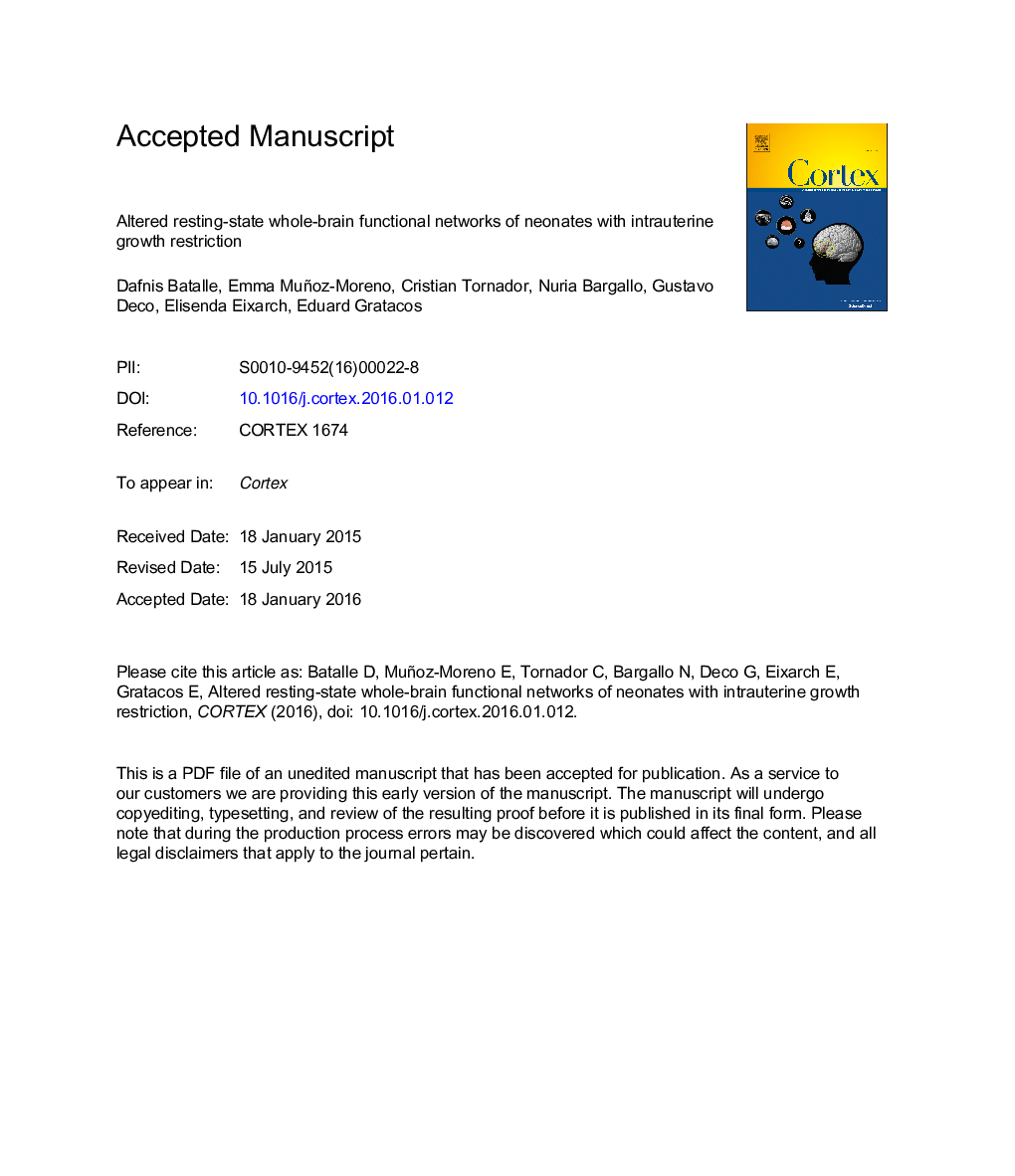| Article ID | Journal | Published Year | Pages | File Type |
|---|---|---|---|---|
| 7313193 | Cortex | 2016 | 34 Pages |
Abstract
The feasibility to use functional MRI (fMRI) during natural sleep to assess low-frequency basal brain activity fluctuations in human neonates has been demonstrated, although its potential to characterise pathologies of prenatal origin has not yet been exploited. In the present study, we used intrauterine growth restriction (IUGR) as a model of altered neurodevelopment due to prenatal condition to show the suitability of brain networks to characterise functional brain organisation at neonatal age. Particularly, we analysed resting-state fMRI signal of 20 neonates with IUGR and 13 controls, obtaining whole-brain functional networks based on correlations of blood oxygen level-dependent (BOLD) signal in 90 grey matter regions of an anatomical atlas (AAL). Characterisation of the networks obtained with graph theoretical features showed increased network infrastructure and raw efficiencies but reduced efficiency after normalisation, demonstrating hyper-connected but sub-optimally organised IUGR functional brain networks. Significant association of network features with neurobehavioral scores was also found. Further assessment of spatiotemporal dynamics displayed alterations into features associated to frontal, cingulate and lingual cortices. These findings show the capacity of functional brain networks to characterise brain reorganisation from an early age, and their potential to develop biomarkers of altered neurodevelopment.
Keywords
IUGRRSNrs-fMRIBOLDDFCConnectomicsROIFDRICAPMAResting-state functional MRINBASDynamic functional connectivityAttention deficit hyperactive disorderautism spectrum disordersResting state networksMRIADHDIndependent component analysisMagnetic resonance imagingfMRIgestational ageFetal growth retardationgrey matterwhite matterCSFCerebrospinal fluidintrauterine growth restrictionNeonatal Behavioral Assessment Scaleregion of interestfalse discovery ratefractional anisotropyASDNewbornBrain mappingblood oxygen level-dependent
Related Topics
Life Sciences
Neuroscience
Behavioral Neuroscience
Authors
Dafnis Batalle, Emma Muñoz-Moreno, Cristian Tornador, Nuria Bargallo, Gustavo Deco, Elisenda Eixarch, Eduard Gratacos,
